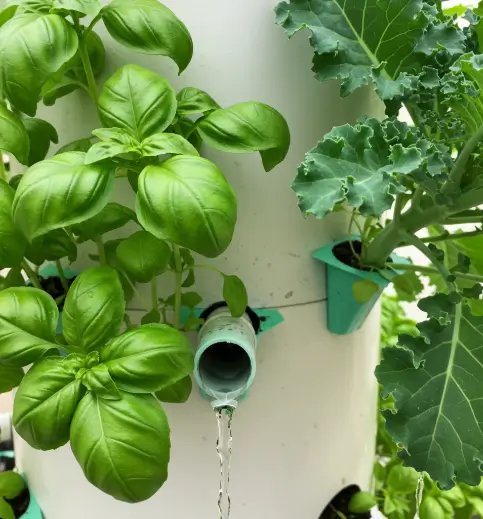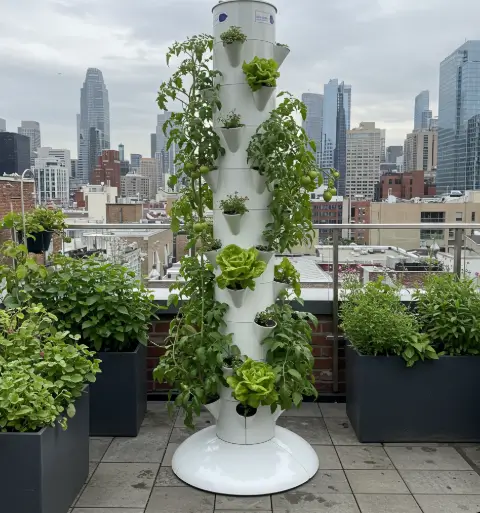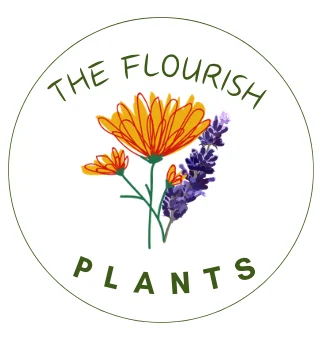Introduction to Tower Gardening
I still remember the first time I saw a tower garden. It was in my aunt Maria’s backyard, right next to her small patio kitchen where she brewed her favorite hibiscus tea. The sight of basil, lettuce, and cherry tomatoes flourishing vertically in the bright sun caught me by surprise. I had never seen such a compact, vibrant system grow so many plants. It made me pause and wonder how I had overlooked such a clever way to grow food.
Table of Contents
What is Tower Gardening?
Tower gardening is a method of growing plants vertically in stacked containers, often with hydroponic systems that use water and nutrients instead of soil. This innovative practice allows gardeners to cultivate a large number of plants in a relatively small footprint, making it ideal for urban spaces and those with limited gardening areas. The design usually includes a central column with planting pockets spiraling around it, giving plants ample room to grow upward rather than outward.
Compared to traditional gardening methods, tower gardening offers numerous advantages:
- Traditional gardens require horizontal space, while tower gardens go vertical.
- Soil-borne diseases are minimized due to the use of hydroponics.
- Maintenance tasks like weeding are drastically reduced.
- The risk of overwatering is minimized with controlled systems.
Benefits of Tower Gardening
One of the greatest strengths of tower gardening is its space efficiency, especially for urban dwellers like myself who have limited outdoor areas. A tower garden can fit on balconies, rooftops, or patios, transforming small spaces into lush, edible landscapes.
Additionally, tower gardens support water conservation and sustainability. Because most systems are hydroponic, they use up to 90% less water than conventional soil gardens. This is a huge plus for regions facing drought or water restrictions.
Finally, the reduced need for pesticides and herbicides is a significant benefit. With a controlled environment, pests and weeds are less likely to infest crops, making it easier to maintain organic and eco-friendly practices.
Disclaimer: This content is for informational purposes only.It is not meant to replace professional medical advice, diagnosis, or treatment.

Understanding Tower Plants
When I first attempted to grow vertically, I had no clue what would work best. I asked my neighbor, Señora Elena, who had more gardening wisdom than anyone I knew. She handed me a small pot of arugula and said, “Start with this, mi hija. It grows like it was made for towers.” That day, I learned there is such a thing as a tower plant—and not every plant is suited for vertical life.
What is a Tower Plant?
A tower plant refers to any plant that thrives in a vertical growing environment, particularly those grown using hydroponic or aeroponic tower garden systems. These plants typically have compact root systems, quick growth cycles, and a high tolerance for controlled water and nutrient delivery.
They differ from traditional garden plants in both structure and behavior. In-ground plants often rely on deep roots to search for nutrients, while tower plants receive nutrients directly at the root base. The absence of soil also changes the way these plants anchor themselves and how they are supported.
Key traits of tower plants:
- Rapid growth and short harvest cycles
- Low-to-medium height with compact foliage
- Strong stems for vertical support
Best Plants for Tower Gardening
Not all crops are created equal when it comes to vertical gardening. Here are some of the best tower plants that have consistently produced results:
- Leafy greens: Lettuce, kale, spinach, Swiss chard
- Herbs: Basil, parsley, cilantro, mint
- Fruits: Strawberries, cherry tomatoes, dwarf peppers
- Flowers: Nasturtiums, pansies, violas
These plants do not just survive—they flourish in tower systems. Their ability to adapt to confined spaces and hydroponic feeding makes them perfect candidates. Larger root vegetables like carrots and potatoes, however, are not well-suited for tower gardening due to their space requirements.
Disclaimer: This content is for educational and informational purposes only. It does not constitute medical or horticultural advice.
Setting Up Your Tower Garden
The first time I set up a tower garden, I was overwhelmed by the number of choices available. My cousin Luis helped me haul in the boxes and lay out the parts across the garage floor. It felt like putting together a futuristic farm, piece by piece. Once we got it running, it became the centerpiece of my patio. Here is what I learned during that setup process.
Choosing the Right Tower Garden System
There are various types of tower garden systems, and choosing the right one is key to success. Popular brands include Tower Garden by Juice Plus+, Nutraponics, Lettuce Grow, and DIY options for the handy gardener.
Factors to consider when selecting a system:
- Size and capacity: How many plants do you want to grow?
- Power source: Will you need electricity for pumps or lights?
- Material quality: Look for UV-resistant, food-grade plastic
- Hydroponic or aeroponic: Decide whether you prefer mist or water bath systems
For beginners, pre-assembled kits with easy instructions are ideal. More experienced gardeners may enjoy customizing their setup with added components and timers.
Installation and Assembly
Setting up a tower garden involves a few essential steps:
- Choose your location: Select a flat surface with good sun exposure if outdoors.
- Assemble the tower structure: Follow the manufacturer’s guide carefully.
- Install the water reservoir and pump system: Ensure proper seals and test the flow.
- Add grow media, Such as rock wool or coco coir, in the plant pockets.
- Connect power (if needed): Ensure safe wiring for any electrical components.
Indoor vs. outdoor setup considerations:
- Outdoor gardens benefit from natural sunlight but may need weather protection.
- Indoor gardens require supplemental grow lights and good ventilation.

Lighting and Environmental Requirements
Tower plants need consistent lighting to photosynthesize efficiently. If outdoors, ensure 6–8 hours of sun exposure daily. For indoor systems, invest in LED grow lights that mimic the full spectrum of sunlight.
Temperature and humidity should also be managed:
- Ideal temperature range: 65–75°F (18–24°C)
- Humidity: 50% to 70% is optimal for most herbs and greens
Adding a small fan indoors can help prevent mold and encourage strong plant growth. With a properly installed system and environmental control, your Tower Garden will thrive year-round.
Disclaimer: This guide is intended for educational purposes only and does not replace professional horticultural advice.
Maintenance and Care of Tower Plants
My tower garden looked stunning in the first few weeks. But then, I noticed the basil starting to yellow, and the mint drooped like it had partied too hard the night before. I knew then that growing vertically wasn’t just set-and-forget. Like any living system, a tower garden requires care, observation, and a little bit of learning. Here’s how I manage mine.
Watering and Nutrient Management
Tower gardens rely heavily on a steady flow of nutrient-rich water. Unlike soil gardens, where nutrients exist naturally, hydroponic systems need precise supplementation.
Key practices include:
- Using a balanced hydroponic nutrient solution with macro and micronutrients
- Regularly checking pH levels (ideal range is 5.5–6.5)
- Monitoring water levels in the reservoir to avoid pump burnout
- Changing the solution every two weeks to prevent salt buildup
Watering schedules depend on the plant type and system setup. In most automated systems, a timer controls irrigation, delivering nutrients multiple times a day. If manually watering, consistency is crucial.
Pruning and Harvesting
Just like in a traditional garden, pruning promotes healthier plants and better yields. I learned that letting herbs grow wild leads to bitterness and legginess.
Effective pruning tips:
- Remove dead or yellowing leaves regularly
- Pinch off flowering tops to encourage foliage
- Harvest greens from the outer leaves inward to allow regrowth
Harvesting regularly not only keeps plants producing but also helps maintain airflow and prevent overcrowding in the tower.
Pest and Disease Control
While tower gardens tend to attract fewer pests due to their elevated and controlled environment, issues can still arise.
Common problems include:
- Aphids, spider mites, and whiteflies
- Fungal diseases like powdery mildew due to high humidity
Organic solutions I trust:
- Neem oil spray for insects
- Hydrogen peroxide (diluted) for mold and root rot
- Incorporating beneficial insects like ladybugs for biological control
Routine inspection and cleanliness are your best defense. Keep your reservoir clean, trim unhealthy foliage, and sanitize parts every few months.
Disclaimer: This section is for informational use only and should not replace the guidance of certified horticultural or pest management professionals.
Cost Analysis and Budgeting
When I started researching tower gardening, I had no idea how the costs would add up. I remember sitting at the kitchen table with my mom, calculator in hand, trying to figure out whether this was a practical investment or just a hobby that looked pretty on Pinterest. What we discovered might surprise you.
Initial Investment
Buying a tower garden system involves a range of costs, depending on the brand, size, and included features. For example:
| Tower Garden System | Price Range (USD) | Features Included |
|---|---|---|
| Tower Garden (Juice Plus+) | $500–$1,200 | Reservoir, pump, timer, planting ports |
| Nutraponics Vertical Tower | $300–$600 | 48–80 planting sites, pump system |
| DIY PVC Tower | $100–$300 | Custom setup, manual watering |
Beyond the unit itself, you will also need:
- Hydroponic nutrients ($20–$50 per month)
- Grow media like rockwool or coco coir ($15–$40 per setup)
- Optional grow lights for indoor setups ($50–$150 each)
Ongoing Expenses
Once the system is up and running, the primary recurring costs include:
- Nutrients: Monthly replenishment is necessary, especially for fruiting plants.
- Electricity: To run water pumps and grow lights (approximately $5–$15/month)
- Water: Usage is minimal but should be factored in (around 90% less than traditional gardens)
- Maintenance: Replacement of pumps or parts may occur annually ($30–$100)
Is Tower Gardening Worth the Money?
Absolutely. While the startup cost may seem steep, the long-term benefits include:
- Reduced grocery bills for fresh produce
- Year-round harvests
- Eco-friendly growing with less waste
When you consider the environmental and health benefits, tower gardening becomes more than a cost—it is a smart, sustainable investment.
Disclaimer: This budget overview is for informational purposes only and should not be considered financial advice. Individual costs may vary depending on region and product availability.
Common Mistakes and How to Avoid Them
Every gardener has that one “oops” moment. For me, it was forgetting to plug in the pump after cleaning. The next morning, my lettuce looked like it had been on a desert hike. Mistakes in tower gardening are common—but the good news is, they’re preventable.
Overcrowding Your Tower
One of the most frequent beginner errors is planting too many crops too close together. This leads to poor airflow, increased competition for nutrients, and disease susceptibility. Tip: Follow spacing recommendations. Think of your tower as vertical real estate—each pocket needs room to breathe.
Ignoring pH and Nutrient Balance
Plants in hydroponic systems rely entirely on you for nutrients and proper pH. If the pH is off, plants can’t absorb what they need. Tip: Check pH levels weekly and adjust as needed (ideal range is 5.5–6.5).
Poor Lighting for Indoor Gardens
Insufficient lighting is a major reason indoor towers fail. Natural sunlight isn’t always enough, especially in winter. Tip: Invest in full-spectrum LED grow lights and keep them 6–12 inches above the plants.
Infrequent Maintenance
A “set it and forget it” mindset leads to pump clogs, nutrient lockout, and sad-looking herbs. Tip: Set a weekly maintenance schedule to clean the reservoir, inspect roots, and top off nutrients.
Neglecting Plant Rotation
Some plants grow faster and may overshadow others. Tip: Rotate crops weekly so all plants receive even light and airflow.
Disclaimer: This information is meant to support your gardening journey and is not a substitute for tailored advice from horticultural experts.
Advanced Tips and Techniques
As I delved deeper into tower gardening, I quickly realized there’s more to it than simply setting up and maintaining the system. Some strategies can maximize yields and keep plants flourishing even in tight spaces. Let me share the advanced techniques that really took my garden to the next level.

Maximizing Yield
To get the most out of a tower garden, it’s crucial to think about optimizing your space. One of the best strategies is succession planting. By planting new crops in the open spots left by harvested plants, you ensure continuous production throughout the year.
Crop rotation also helps maintain soil health and ensures that no single nutrient is depleted too quickly. Though it may sound like a traditional gardening technique, it applies to tower gardens as well.
Companion Planting in Tower Gardens
Another key technique is companion planting, which I learned from a local gardener. Some plants naturally thrive when grown near each other, while others can help ward off pests. For example, basil and tomatoes grow well together in a tower garden, as basil can help repel insects like aphids.
On the other hand, avoid placing plants like peas and garlic near each other, as they can inhibit each other’s growth. Understanding which plants complement one another in a vertical garden system will boost the health of your plants.
FAQs on Tower Gardening and Tower Plants
What Are the Best Tower Plants?
The best plants for tower gardens are those that thrive in compact, vertical environments. These include:
- Leafy Greens: Lettuce, kale, spinach, and Swiss chard. They grow quickly and have shallow roots, making them perfect for tower systems.
- Herbs: Basil, parsley, cilantro, and mint. These plants do well with limited space and in controlled environments.
- Compact Fruits: Dwarf varieties of tomatoes, peppers, and strawberries thrive due to their small root systems.
- Flowers: Nasturtiums and pansies are great decorative additions to tower gardens.
These plants are suited for vertical growth because of their short root systems and fast-growing cycles.
What Is a Tower Plant?
A tower plant is any plant that is well-suited for vertical gardening systems like tower gardens. These plants tend to have:
- Compact root systems that don’t need deep soil.
- Quick growth rates to adapt to hydroponic or aeroponic systems.
- Ability to thrive in confined spaces and controlled nutrient environments.
Examples include lettuce, kale, basil, and dwarf fruiting plants.
Why Is Tower Garden So Expensive?
Tower gardens can be pricey due to several factors:
- Materials: High-quality, UV-resistant plastics and food-grade components contribute to the cost.
- Technology: Hydroponic systems, pumps, and timers add to manufacturing expenses.
- Branding: Well-known brands like Tower Garden by Juice Plus+ can increase prices.
However, compared to traditional gardening expenses, a tower garden can save on water, space, and pest control over time.
What Can You Not Grow in a Tower Garden?
Not all plants are suitable for tower gardening:
- Root Vegetables: Carrots, potatoes, and beets need deep soil to grow, which isn’t available in a tower system.
- Large Plants: Squash and large tomatoes may overtake the available space.
- Heavy Feeders: Some plants require more nutrients than a tower system can easily provide.
These plants either need more space or nutrient delivery, which is challenging to achieve in a vertical garden setup.
Conclusion and Final Thoughts
Tower gardening is an innovative way to grow plants in limited spaces. With its ability to save water, reduce pest problems, and fit into tight areas like balconies or rooftops, it’s a great choice for urban gardeners. The system works best with compact, fast-growing plants, like leafy greens and herbs, while larger crops may not thrive. With proper setup and care, tower gardening can transform small spaces into sustainable food sources. If you’re looking for a more eco-friendly way to garden, a tower garden might just be the perfect solution.


1 thought on “The Ultimate Guide to Tower Gardening and Tower Plants”